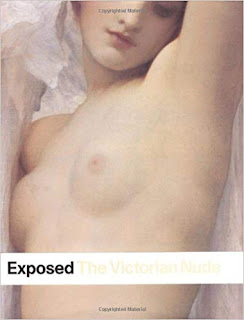British biographer, broadcaster and former Patron of the Museum of London, Lucinda Hawksley has many talents. After an MA in Literature and Art History, she specialised in social history from the 19th and 20th centuries. With a keen interest in her family, it was only natural that I should interview the great-great-great granddaughter of Charles Dickens.
Les Carnets de VV: To you mind, what are the major studies on the feminine condition of the Victorian period and how did they make research progress?
Lucinda Hawksley: Like so many women of her generation, Harriet Martineau was largely self-taught. Her research was born out of a desire to study and improve her own education. She also researched by talking to people, conducting interviews and recording what she experienced. She spent over two years on a research trip to America.
Caroline Norton learnt about injustices first hand and then studied the law and used her writing skills to bring other people to awareness of what was going on. It took her decades, but it changed the British law.
Josephine Butler researched by talking to the women she wanted to help and badgering the lawmakers, she made sure that work got into the media and wrote to as many influential people as possible.
Eleanor Marx began her research skills by working with her father, and then worked on her own projects, constantly wanting to improve the lives of people she learnt about.
Clementina Black made progress by making her voice heard in the Trades Union movements and by publishing "On Marriage".
Post-Victorian, look at Jill Liddington and Jill Norris' book One Hand Tied Behind Us as it is a fantastic look at the women who fought for suffrage rights and often in their own words. Henry Mayhew's London Labour also has fascinating interviews.
LCdVV: The 'Angel in the House' expression has been widely discussed. Do you think the vision Victorians had about women was one-sided?
LH: I think the vision that most Victorian men and the Victorian media - run by men - was very one-sided, but women's views of themselves were changing rapidly, and of course there was a number of men, in the minority of their gender, who also fought to re-define the concept of equality.
LCdVV: In the catalogue of Tate's Victorian Nude exhibition, Martin Myrone shows that the current notion about prudery was created in the early 20th century by the Edwardians who wished to present themselves as modern. He goes as far as maintaining that Victorian sexuality wasn't truly repressed by social and political structures. What do you think about this?
LH: I agree. When you write biography, you realise how very little human nature changes, it os restricted or shaped by the society in which a person lives, the rules or religious codes of conduct thay are forced to accept or the laws which they live under, but inherent human nature and behaviour doesn't change. Lytton Strachey famousley wrote that the Victorians were so prudish that they even needed to cover the ankles of their table and chair legs, it was a joke, but people since have read it as an historic fact and it has been passed on as a truism about Victorian life, which simply wasn't! That's not to say there was not also a great deal of prudery in the Victorian era, such as the emphasis laid on the "fallen woman" and the insistence on preventing children from masturbating (if you've ever seen, for instance, examples of hideous devices attached to the boys' penises before bed to prevent them from having erections as they slept it it amazing to consider any of them made it to adulthood without being permanently emotionally scarred), but it wasn't widespread as the Edwardians would like us to think. There were always freethinkers and experimenters, such as Wilkie Collins and Caroline Norton, who went against the norm, and whole stratas of society existed outside of the middle-class bourgeois world in which everyone had to act, dress and behave the same.
LCdVV: What was the status of prostitution and how was it considered?
LH: Prostitution was the evil that contaminated family life and it was the female prostitutes who were blamed, not the married men who were using them. You should also look up the Contagious Diseases Acts and the activism of Josephine Butler and others to find out more. One of the nastiest facts of Victorian life was that the age of consent being raised, in the 1870s, from just 12 to 13 years old. This made Britain the paedophiliac sex tourism capital of Europe, with children being trafficked to be raped in brothels. You should also look up the William Stead case in 1885, his journalism about child prostitution - and his subsequent imprisonment (because he "bought" a child for £5 to show how the scandal was carried out, he was then imprisoned for carrying out the crime he was trying to expose). He was a remarkable man and deserves to be remembered and recognised for his work. NB Male prostitution was seldom mentioned, unless it was a cause célébre, such as the Cleveland St Scandal or the Oscar Wilde scandal.
LCdVV: When did the first feminist movements start to gain importance?
LH: The history of feminism has waxed and waned since ancient times when tribes were matriarchal and worshipped female gods. In modern British history, the 18th century was far more enlightened than the 19th century, ironically Queen Victoria's reign pushed what had been a burgeonning women's movement back into the shadows.
LCdVV: After publications by Foucault, Marcus (The Other Victorians) and gender studies, is there room for more?
LH: Of course! There's always room for more discussion.





